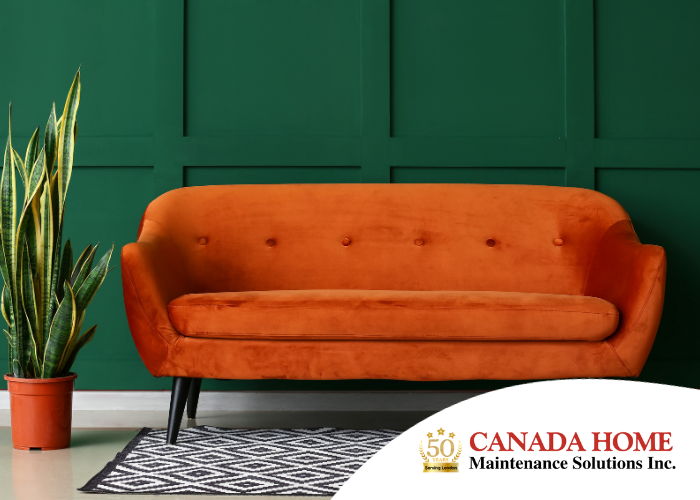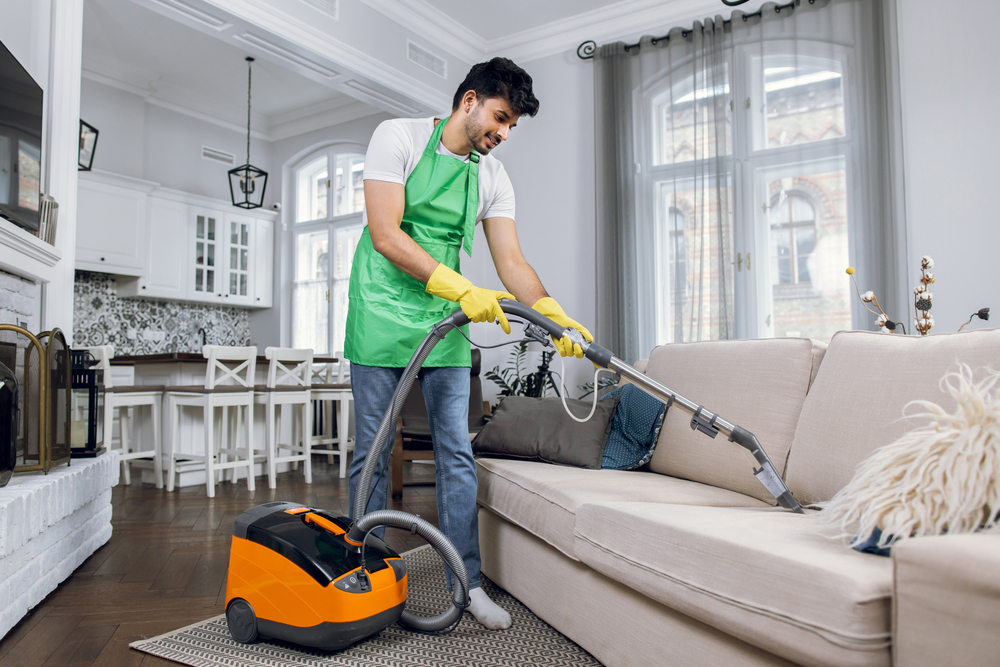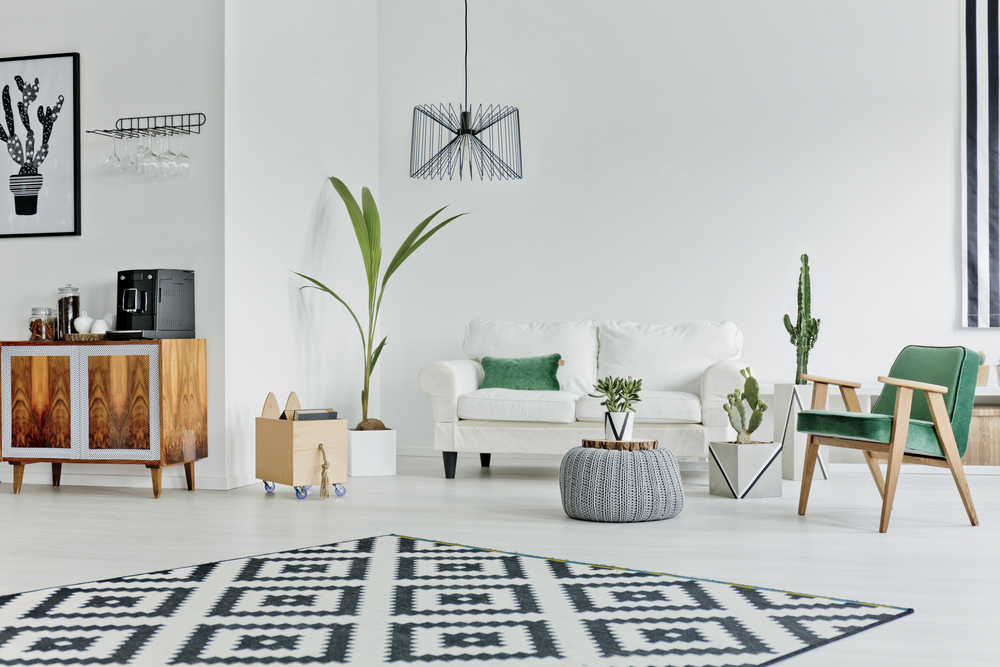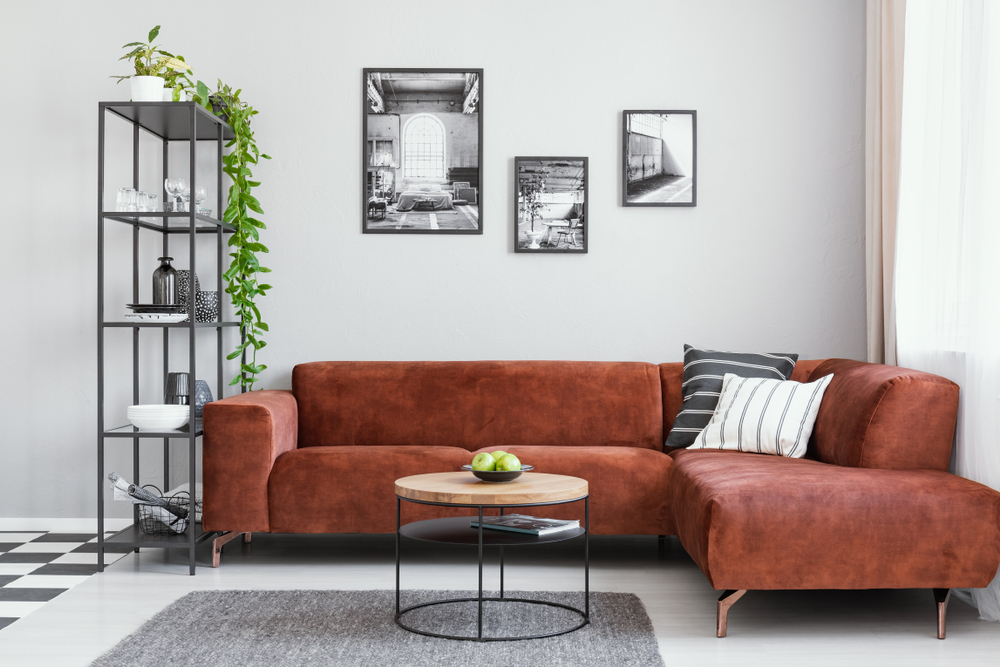The Science Behind Upholstery: Maintenance, Cleaning, and Longevity

Upholstery plays a pivotal role in our daily lives. Whether it's the comfortable sofa in your living room, the ergonomic office chair, or the plush seats in your car, upholstery not only enhances our comfort but also adds aesthetic value to our spaces.
However, to ensure the longevity and cleanliness of your upholstery, it's essential to understand the science behind it. In this blog, we will delve into the scientific explanations behind upholstery maintenance, cleaning, and the factors influencing its lifespan.
The science behind upholstery materials
Upholstery materials encompass a wide range of fabrics and padding types, each with distinct properties and scientific characteristics that influence their performance and suitability for various applications. Here's a closer look at the scientific aspects of these materials:
1. Fabric Composition:
Natural Fibers: Fabrics like cotton and wool are made from natural fibers, which are primarily composed of cellulose (in the case of cotton) or protein (in the case of wool). The arrangement of molecules in these fibers contributes to their softness and breathability but also makes them susceptible to water absorption, staining, and degradation over time due to factors like microbial activity.
Synthetic Fibers: Materials such as polyester, nylon, and polypropylene are composed of synthetic polymers. These synthetic fibers are engineered to be durable, resistant to staining, and less prone to water absorption. Their molecular structure provides greater resistance to wear and tear.
2. Foam and Cushioning:
Polyurethane Foam: Most upholstery padding consists of polyurethane foam, a synthetic material with a cell structure that offers varying degrees of density and resilience. The scientific aspect lies in the polymerization process, which forms the foam's structure. High-density foam has a greater number of interconnected cells, providing better support and durability, while lower-density foam is softer but tends to deteriorate more quickly due to fewer and larger cells.
3. Blends and Composites:
Upholstery materials often feature blends of natural and synthetic fibers, combining the best properties of both. The scientific consideration here involves the interaction of different materials at the molecular level, resulting in enhanced durability, comfort, and aesthetics.
4. Testing and Standards:
Scientific testing methods, such as abrasion resistance, tensile strength, and colorfastness, are employed to evaluate upholstery materials' performance and quality. These tests adhere to industry standards and provide quantifiable data on how materials withstand wear, stress, and environmental factors.
5. Flame Retardancy:
Upholstery materials may undergo flame retardant treatments to meet safety standards. The science involves the application of fire-resistant chemicals that interrupt the combustion process, reducing the material's flammability.
6. Antimicrobial Properties:
Some upholstery materials are treated with antimicrobial agents to inhibit the growth of bacteria, mold, and fungi. The science behind this involves the release of biocides or the modification of material surfaces to create an inhospitable environment for microorganisms.
7. Colorfastness and Fade Resistance:
The color of upholstery fabrics is often subject to scientific testing to ensure colorfastness, which refers to the material's ability to retain its color over time. This involves exposing the material to various environmental conditions, such as UV radiation and moisture, to assess how well it resists fading and discoloration.
8. Environmental Impact:
Scientific research and development efforts focus on creating eco-friendly upholstery materials. This includes exploring sustainable sourcing of natural fibers, recycling of materials, and reducing the environmental footprint of synthetic production processes.

Upholstery maintenance: damage causes and solutions
Proper maintenance is the key to extending the life of your upholstery. The science of maintenance involves understanding the factors that affect the wear and tear of upholstery over time.
1. UV radiation
Cause: Ultraviolet (UV) radiation from sunlight is a significant factor in upholstery deterioration. The science behind this is photodegradation, a process in which UV rays break down the chemical bonds in upholstery materials. This can lead to fading, weakening of fibers, and reduced fabric lifespan.
Solution: To mitigate this, consider using UV-protective window films or keeping your upholstery out of direct sunlight.
2. Soil accumulation
Cause: Upholstery attracts dirt, dust, and other particles from the environment. The science here is that these particles can act like abrasive agents, causing friction and wear on the fabric's surface.
Solution: Regular vacuuming and dusting are essential for preventing soil accumulation and maintaining the upholstery's appearance.
3. Weight distribution
Cause: When we sit or lie on upholstery, our body weight is distributed unevenly. Over time, this can lead to sagging and indentation. The science behind this phenomenon is the compression of foam and cushioning materials under pressure.
Solution: To counteract this, regularly rotate and flip cushions to ensure even wear.
Upholstery cleaning tips
Proper maintenance is the key to extending the life of your upholstery. The science of maintenance involves understanding the factors that affect the wear and tear of upholstery over time.
1. pH levels
The science of cleaning upholstery involves adjusting pH levels. Stains can be acidic or alkaline, and different cleaning agents work best under specific pH conditions. For example, vinegar is acidic and effective for removing alkaline stains like coffee, while baking soda is alkaline and useful for acidic stains like red wine. Understanding the pH of stains and cleaning agents ensures successful stain removal.
2. Surface Tension:
The science of surface tension plays a role in stain removal. Liquid spills form droplets on the upholstery's surface due to surface tension, making it easier to blot or wipe them away before they penetrate the fabric. Quick action is essential to prevent stains from becoming deeply ingrained.
3. Chemical Reactions:
Many commercial upholstery cleaners contain enzymes that break down organic stains like food and pet accidents. The science here involves the enzymes' ability to catalyze chemical reactions that break apart the stain molecules, making them easier to clean.
4. Steam Cleaning:
Steam cleaning is a widely used method for deep cleaning upholstery. The science behind steam cleaning lies in the high-temperature steam's ability to break down and lift dirt and stains from the fabric's fibers. The steam's heat also kills bacteria and dust mites, contributing to a healthier indoor environment. Check out carpet and upholstery steam cleaning here.
The role of environmental factors in upholstery maintenance in Canada
Environmental factors play a significant role in upholstery maintenance in Canada, a country known for its diverse climate and varying weather conditions. Understanding and managing these environmental factors is crucial to preserving the quality and longevity of upholstered furniture in Canadian homes and businesses.
Here's a closer look at the role of environmental factors in upholstery maintenance in Canada:
Humidity Levels:
Canada experiences a wide range of humidity levels throughout the year. High humidity can lead to issues such as mold and mildew growth on upholstery materials. Mold and mildew not only damage the fabric but can also pose health risks. On the other hand, low humidity can cause upholstery materials to dry out, leading to cracking and deterioration.
Upholstery maintenance in Canada involves managing indoor humidity levels through the use of humidifiers and dehumidifiers, depending on the season and climate zone. Proper humidity control helps prevent mold and mildew while maintaining the upholstery's integrity.
Temperature fluctuations
Canada's climate varies from extremely cold winters to hot summers, and temperature fluctuations can affect upholstery materials. Extreme cold can make materials more brittle, leading to cracking and damage. Conversely, exposure to high temperatures can cause upholstery materials to expand and contract, potentially leading to seam separation and distortion.
Upholstery maintenance in Canada includes minimizing exposure to extreme temperatures, using appropriate insulation, and avoiding direct sunlight when possible. These measures help mitigate the impact of temperature fluctuations on upholstered furniture.
Indoor heating
Canadian winters necessitate indoor heating, which can further dry out the air inside homes and buildings. Dry indoor air can accelerate the drying and aging of upholstery materials, particularly natural fibers.
To counteract the effects of indoor heating, homeowners often employ strategies such as using room humidifiers, using upholstery covers when not in use, and ensuring adequate ventilation to maintain optimal humidity levels.
Moisture management
Canada's geography includes regions with a high propensity for rain and snowfall. Moisture from rain, snow, or tracked-in water can be damaging to upholstery materials. Moisture can lead to staining, fabric discoloration, and, in extreme cases, promote mold growth.
Upholstery maintenance in Canada involves preventative measures like placing moisture-absorbent mats near entrances, using waterproof covers, and prompt drying and cleaning in the event of spills or moisture exposure.
UV radiation
Canada experiences varying levels of UV radiation throughout the year, with increased exposure during sunny days. UV radiation can lead to the fading and deterioration of upholstery fabrics.
Upholstery maintenance in Canada often includes using window treatments like curtains or blinds to block or reduce UV exposure. Additionally, choosing UV-resistant upholstery fabrics can help extend the life of furniture.
Air quality
Indoor air quality in Canada can be affected by factors such as heating systems, pollution, and allergens. Poor air quality can lead to the accumulation of dust and particles on upholstery, which may contribute to wear and soiling.
Regular cleaning and maintenance, including vacuuming and occasional professional cleaning, are essential to keep upholstered furniture in optimal condition, particularly in areas with poor air quality.
How often should you clean your upholstery in Canada
The frequency at which you should clean your upholstery depends on various factors, including usage, the type of upholstery, and your household environment.
Here are some general guidelines to help you determine how often to clean your upholstery:
Regular Upholstery Maintenance: Regular maintenance, such as vacuuming and dusting, should be done weekly or bi-weekly. This helps remove surface dust, dirt, and allergens before they become deeply embedded in the upholstery fabric.
Light Use Areas: In areas with light usage, such as formal living rooms or decorative furniture, a thorough upholstery cleaning every 12 to 24 months is typically sufficient. This can involve professional cleaning or using a home upholstery cleaning machine, depending on your preference and the manufacturer's recommendations.
Moderate Use Areas: In areas with moderate usage, such as family rooms or frequently used sitting areas, upholstery should be cleaned every 6 to 12 months. Families with pets or young children may need more frequent cleaning due to spills and pet dander.
High Use Areas: High-use areas like dining chairs, sofas in homes with pets, or office furniture should be cleaned every 3 to 6 months. These areas are more prone to spills, stains, and heavy soiling, so more frequent cleaning is necessary to maintain their appearance and hygiene.
Allergen Concerns: If anyone in your household has allergies or respiratory issues, consider more frequent cleaning, especially in high-use areas. Upholstery can harbor allergens like dust mites, pet dander, and pollen, so regular cleaning helps improve indoor air quality.
Spills and Stains: It's essential to address spills and stains promptly. Waiting too long can make stain removal more challenging. Blot spills immediately with a clean cloth and follow the manufacturer's cleaning instructions for specific stains.
Professional Upholstery Cleaning: While regular vacuuming and spot cleaning can help maintain upholstery, professional cleaning by a certified technician is recommended at least once a year for most upholstered furniture. Professional cleaning removes deep-seated dirt, allergens, and stains effectively.
Manufacturer's Recommendations: Always check the manufacturer's care instructions and warranty guidelines for your upholstery. Some fabrics may have specific cleaning requirements, and failure to follow these recommendations can void the warranty.
Environmental Factors: Consider the environmental factors in your region. For example, if you live in an area with high humidity or where the furniture is exposed to a lot of dust, you may need more frequent cleaning.
Usage Patterns: Pay attention to how often your upholstery is used. Furniture that gets daily use will require more frequent cleaning than pieces used sparingly.
In summary...
Ultimately, the key to keeping your upholstery clean and in good condition is regular maintenance and adjusting the cleaning schedule based on factors like usage and environmental conditions.
Cleaning your upholstery at the appropriate intervals will not only extend its lifespan but also ensure a cleaner and healthier living environment.
If you're looking for a professional upholstery cleaning company near me in London, Ontario, head on to Canada Home Maintenance. They've been in the business for over 50 years. Feel free fill out the form and get a FREE quote.
For more home maintenance tips, we have prepared helpful resources for you:



